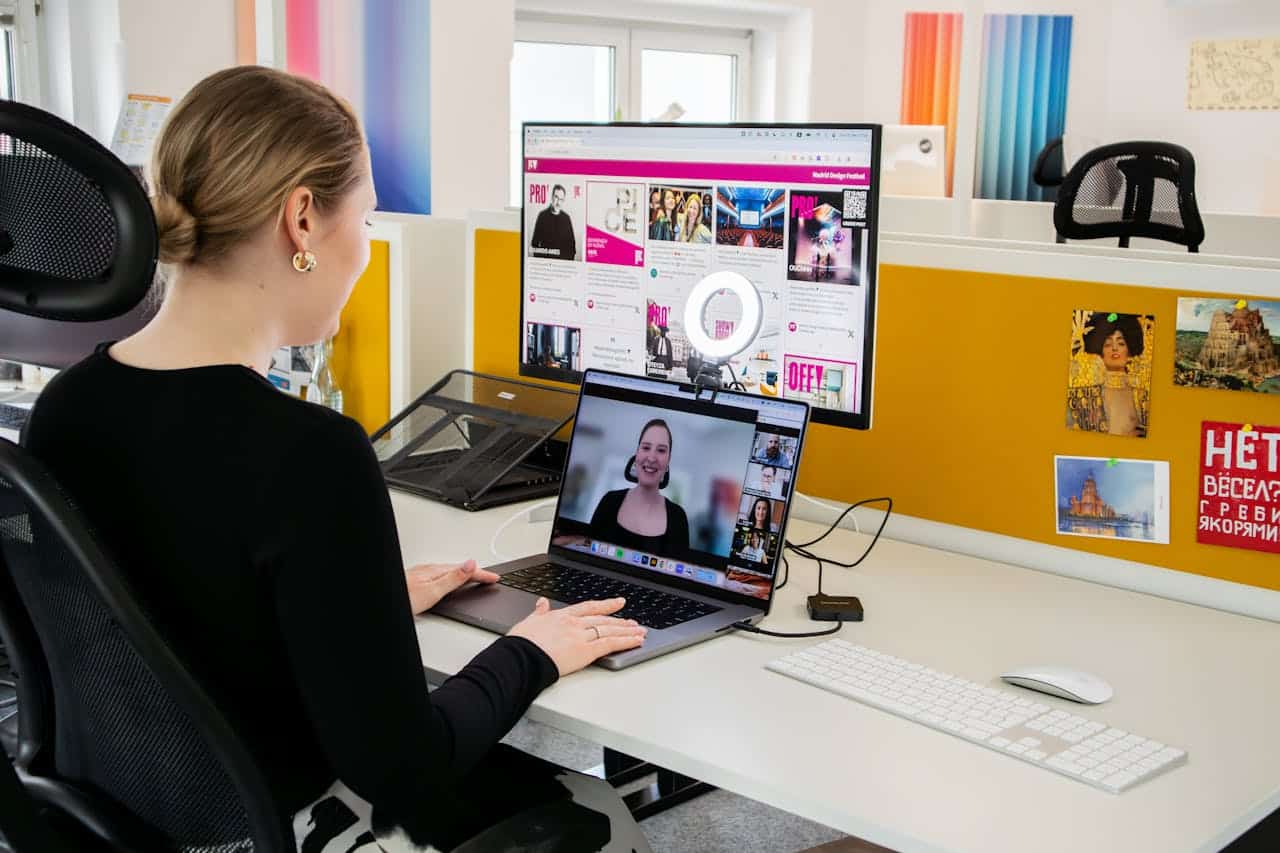In today’s fast-paced business environment, corporate events aren’t just about presentations and handshakes. They are about creating immersive experiences that foster innovation, collaboration, and lasting connections.
The world of corporate event planning is experiencing a renaissance. There are amazing trends that merge creativity, technology, and strategic vision to craft experiences that captivate both employees and clients.
How do you make sure your events stand out from the rest? Let’s go through the top event planning trends you should consider.
1. Hybrid Elements
Hybrid event planning has become increasingly popular in recent years as a way to combine both in-person and virtual elements.
Hybrid elements also provide an excellent opportunity to extend the event’s reach. By catering to virtual attendees, event planners can connect with a global audience.
They’ll reach individuals who might not have been able to attend in person. This expanded reach increases the event’s impact. It also has the potential to attract a more diverse and geographically dispersed audience.
Create immersive experiences that blend different physical and digital media. Use virtual reality or augmented reality to transport virtual attendees to the physical event space. This can be particularly effective for product launches, tours, or hands-on experiences.
Instead of a single camera, consider using multiple cameras to provide a dynamic view of the event. Switching between camera angles can enhance the virtual audience’s experience. That helps them feel more engaged.
2. Event Programs
Coming up with specific programs can help take your events to the next level.
Create immersive experiences that go beyond traditional lectures or presentations. Incorporate interactive elements, hands-on activities, and opportunities for people to actively participate.
To accommodate busy schedules and maintain engagement, event programs are featuring shorter, more focused sessions.
Micro-learning formats and “quick-hit” sessions are gaining popularity. They allow you to deliver valuable content in a shorter time frame.
Don’t be afraid to rethink traditional events. Traditional keynote presentations are being reinvented with more interactive formats and engaging speakers.
Planners are also looking for more opportunities for real-time audience interaction. These could include Q&A sessions and polls.
3. Event Gamification
Gamification is a powerful tool in event planning that leverages game design elements to enhance engagement, interaction, and overall experience.
From points and leaderboards that spark friendly competition to challenge-based missions that encourage exploration, the possibilities are boundless. Augmented reality scavenger hunts add a touch of excitement as participants hunt for virtual treasures.
Gamified networking sessions break the ice and create new connections. That helps create a stronger sense of community. Escape rooms challenge participants to solve intense puzzles and work closely together. This adds an element of suspense and teamwork.
Including a photo booth in your event is also a great choice. Visitors will have the photo as a souvenir, so they’ll be able to revisit the occasion for years to come.
4. On-Demand Content
On-demand content has become a pivotal trend in event planning, offering a level of convenience and flexibility that resonates with modern audiences. This trend allows event organizers to adapt to the changing dynamics of how content is consumed and shared.
Innovative event planners are taking this trend to new heights by providing interactive on-demand content. This can include Q&A sessions, live chat features, or discussion forums connected to the pre-recorded content.
Event planners are increasingly focusing on the usability and accessibility of these digital content libraries. User-friendly platforms, intuitive search functions, and well-organized content are crucial. They ensure that attendees can easily find the materials they need.
Accessibility features make the content inclusive and accommodating for everyone, including those with disabilities. Examples include transcripts, closed captioning, and offering different formats.
5. Local and Sustainable Choices
Opting for local and sustainable choices is a trend in event planning. It not only helps reduce the environmental footprint but also fosters a sense of community and authenticity.
Source event materials, supplies, and products locally. That helps you support the community and reduce carbon emissions. This might include locally grown food, artisanal decorations, and locally crafted event swag.
Implement zero-waste initiatives such as using compostable or reusable tableware and reducing single-use plastics. You can also set up specific recycling stations throughout the space.
Offer people the option to offset their carbon footprint by contributing to local reforestation projects or other sustainability initiatives.
Have a strict no-plastic policy and encourage attendees to bring their reusable water bottles and bags. Provide water refill stations to reduce the use of single-use bottles.
6. Post-Event Engagement
Another trend that’s gaining momentum is the hosting of virtual post-event reunions. These virtual gatherings provide your guests with an opportunity to reconnect with fellow participants, discuss key takeaways, and share their experiences.
They serve as a natural extension of the event’s networking aspects, creating a platform for lasting connections and knowledge exchange.
Organizers can create content recaps and highlights, summarizing key takeaways and highlights from the event. These concise summaries are easily shareable and keep the event fresh in attendees’ minds.
You can send people exclusive post-event offers or early access to future events. This provides them incentives to stay engaged and continue their participation.
Personalized post-event communications create a more individualized experience. Consider trying things like thank-you notes or content recommendations based on attendees’ interests.
7. Storytelling and Narrative Themes
Storytelling and narrative themes have emerged as powerful event-planning trends that can inspire creativity and leave a lasting impact on attendees.
These trends go beyond the traditional format of events and create immersive and emotionally engaging experiences. By weaving a compelling narrative throughout the event, planners can captivate your guests and build a sense of connection and community.
The power of storytelling lies in its ability to make the event more memorable, relatable, and emotionally resonant.
Whether it’s a corporate conference, a festival, or a product launch, storytelling can infuse events with an element of magic. That magic can linger long after the event has ended.
One creative approach is to develop a central event theme or storyline that guides the entire event experience. People can become active participants in the unfolding narrative, allowing them to connect on a deeper level with the event content and each other.
8. Innovative Technology
As technology continues to advance, events have evolved into immersive experiences that captivate attendees and offer new possibilities for creativity. Event planners are embracing innovative tech solutions to provide interactive and memorable experiences, whether in-person or virtually.
AI-driven chatbots and virtual assistants have become a staple in event planning. These bots enhance engagement by providing instant assistance, answering questions, and offering guidance throughout the event.
They can also facilitate gamification elements. That can help attendees navigate challenges and interact with the event content.
Smart event spaces have gained prominence. Event planners are leveraging smart technology to create interactive and dynamic event environments.
These spaces may feature interactive walls, floors, or tables that respond to touch or movement. That helps transform the event into a futuristic and engaging experience.
The event planning industry is embracing contactless technology for various event processes. Contactless solutions enhance convenience. They also address health and safety concerns that have emerged in the wake of the pandemic.
You could invest in specific event tech. Things like mobile apps are designed to provide a personalized experience. Users can set preferences, receive content recommendations, and engage with interactive features based on their choices.
9. Geofencing and Location-Based Experiences
Don’t forget location when you’re event planning. Through geofencing technology, event planners can deliver personalized content and notifications to attendees based on their precise location within the event venue.
This not only enhances the experience but also allows for more targeted engagement, as information and offers can be tailored to specific areas or activities, driving participation and interaction.
Geofencing opens the door to creative interactive experiences within events. Planners can organize scavenger hunts and location-based games, encouraging visitors to explore and engage with different aspects of the event.
These games can be facilitated through event apps, fostering a sense of excitement and competition among participants.
This also helps with more effective networking. It allows attendees to identify and connect with others nearby who share similar interests or professional backgrounds. That improves the value of the event for participants.
10. Personalization
Personalization has become a significant trend in event planning, driven by the desire to create unique and engaging experiences.
You can leverage data analytics and attendee profiles to deliver customized content and experiences. By understanding preferences, you can tailor event offerings to specific audience segments.
Attendees are given the flexibility to create their own event agendas. They can choose sessions and activities that align with their interests. This allows for a more individualized experience. People can focus on events that are most important to them.
Personalization can also include accessibility measures. Event organizers are accommodating dietary restrictions and accessibility needs with personalized food options and services. That ensures that every attendee feels valued and included.
Event Planning Trends: Start Trying Things Out Today
There are a lot of different event planning trends you might want to incorporate into your next event. Experiment with different options and figure out what works for you.
Are you interested in being a part of the next Event Planner Expo? Learn more about exhibiting at next year’s Expo!








